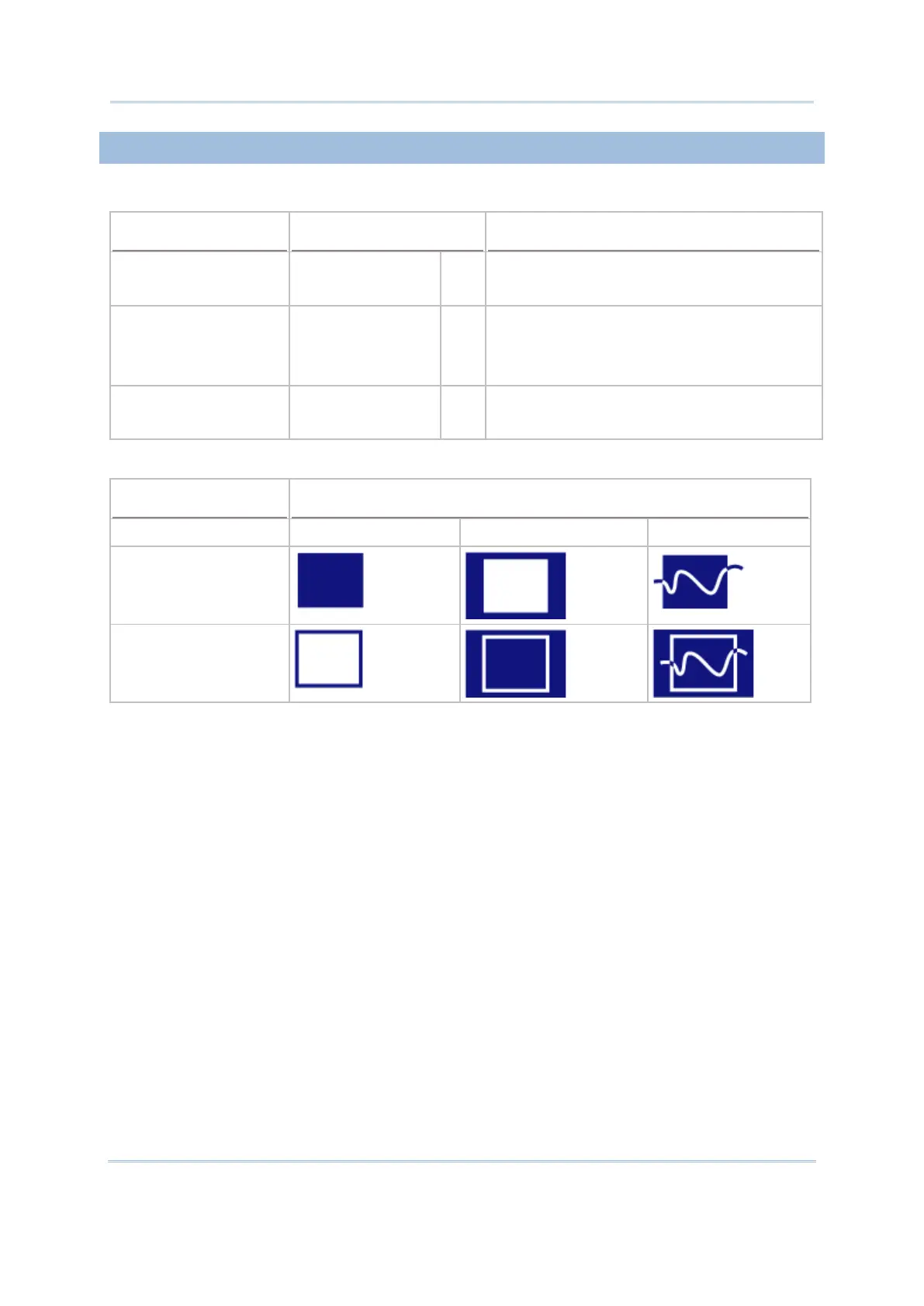133
A monochrome graphic has three factors as listed in the table.
Video Mode VIDEO_REVERSE
VIDEO_NORMAL
1
0
See SetVideoMode()
Pixel State DOT_MARK
DOT_CLEAR
DOT_REVERSE
1
0
-1
See circle(), line(), putpixel() and rectangle()
Shape State SHAPE_FILL
SHAPE_NORMAL
1
0
See circle(), rectangle()
Illustrative examples are given below.
DOT_MARK DOT_CLEAR DOT_REVERSE
SHAPE_FILL
SHAPE_NORMAL
